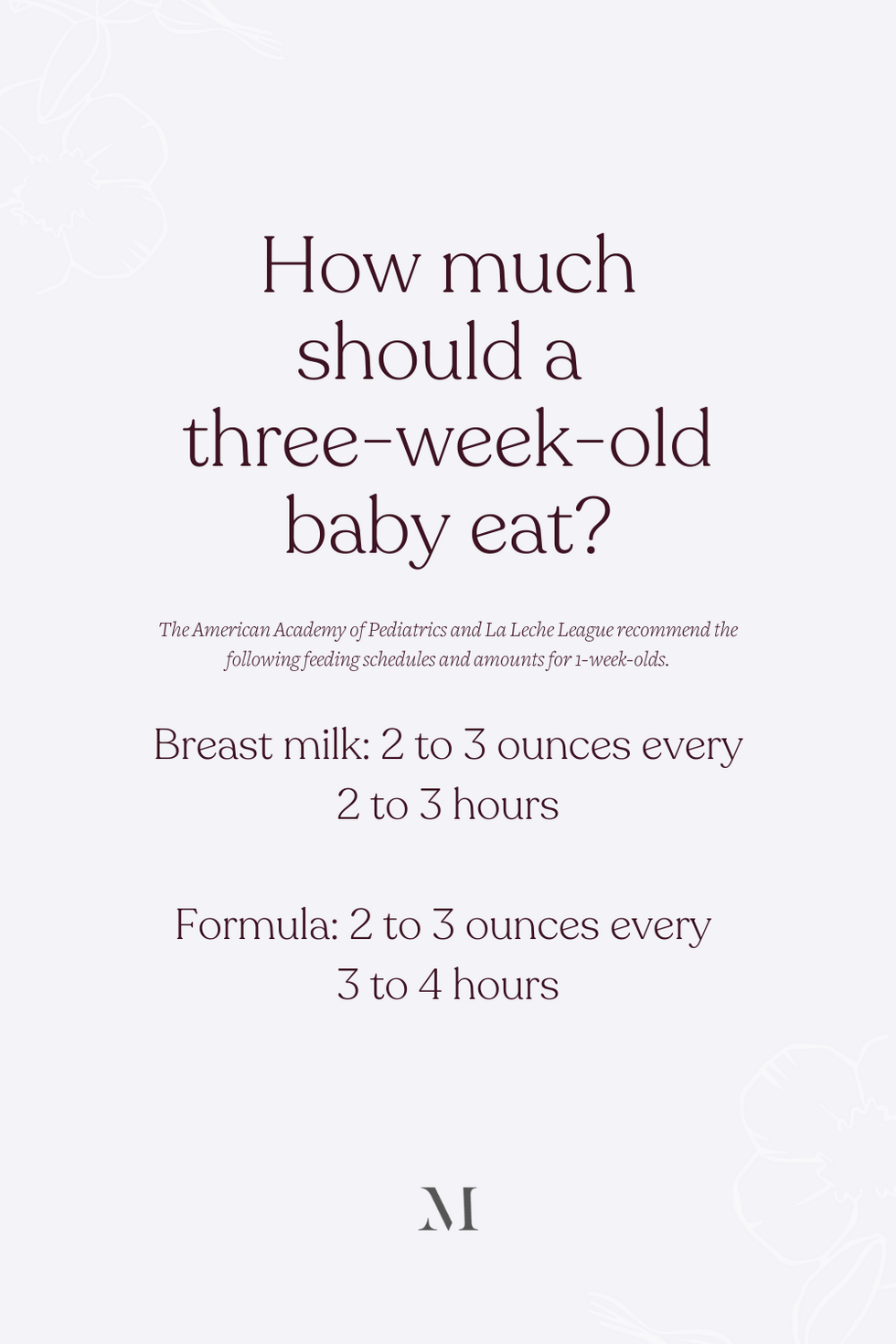3 Week Old Formula Feeding Schedule
Three weeks in and we bet you can already feed your baby one-handed and half-asleep. That's some impressive progress, mama! Whether you are breastfeeding, formula-feeding or combo-feeding, your goal at this point should be nourishing your baby in the way that feels right for you—and asking for help if anything feels off. We may not have the same "village" system that mamas from generations ago used to enjoy, but wedo have the benefit of access to lactation consultants, pediatricians and video calls with supportive friends.
What amount should a three-week-old baby eat?
The American Academy of Pediatrics and La Leche League recommend the following feeding schedules and amounts for 3-week-olds.
Breast milk: 2 to 3 ounces every 2 to 3 hours
Formula: 2 to 3 ounces every 3 to 4 hours
Mama, note that because formula tends to be metabolized more slowly than breast milk (meaning it takes longer to digest and empty from the stomach), when using formula, your baby's feeding windows may be a bit more spread out. The American Academy of Pediatrics (AAP) also recommends that parents should follow the responsive feeding method, also known as feeding on demand, which looks to the infant's hunger cues for when to feed. The schedules below are just examples—be sure to follow your baby's hunger signals to know when your little one is ready for the next feeding. As babies get older, their hunger cues and feeding times start to become a little more predictable.
Related: One-month-old baby milestones
How often should a three-week-old baby eat? A sample newborn feeding schedule:

Remember, it's more important that you follow your baby's cues than adhere to a set schedule, so schedules outlined are general guides of how frequently you'll feed your baby—not hard-and-fast rules.
These guidelines also apply primarily to infants born full-term and without any underlying medical conditions. For preterm infants, babies with certain medical conditions or for any specific questions pertaining to your child, be sure to consult your child's pediatrician for a more customized feeding schedule.
Related: Baby Sleep Guides & Schedules
What are common three-week-old hunger cues?
Gentle cues: Eyes moving beneath closed eyelids or eyelids fluttering when waking from sleep, moving their hands toward their mouth, licking their lips, sticking out their tongue or opening and closing their mouth
Stronger cues: Rooting (turning their head from side to side repeatedly), whimpering, sucking on hands
Obvious demands: Crying, tensing up, fussiness
Does your three-week-old spit-up a lot? How to manage and reduce spit-up:
With a three-week-old baby, spit-up happens and it's not usually a sign for concern. The most common cause of spit-up is an immature gastroesophageal system that sends some of what they just ate back up again—especially if your baby consumed too much or ate too quickly. You may be able to minimize spit-up by holding your baby more upright during feedings and adequately burping them afterward. And, stay positive: Babies tend to grow out of spitting up within a few months. Until then, keep a burp cloth handy!
After three weeks of feedings (alot of feedings), you may feel more confident. It's understandable if you also feel worn-out. This is hard work, mama! Make sure you are looking out for yourself, too. Proper fuel, hydration and rest are key—because what's good for you is also good for your baby.
Read more about wellness for mama and your 3-week-old:
- How much sleep does a 6-week-old need?
- Motherly's Postpartum Wellness Class is here!
- Subscribe to the Becoming Mama podcast
- When is it okay to bring baby outside?
A version of this story was published December 13, 2021. It has been updated.
Source: https://www.mother.ly/parenting/baby-feeding-schedule/3-week-old-baby-feeding-schedule-and-amounts/
0 Response to "3 Week Old Formula Feeding Schedule"
Post a Comment